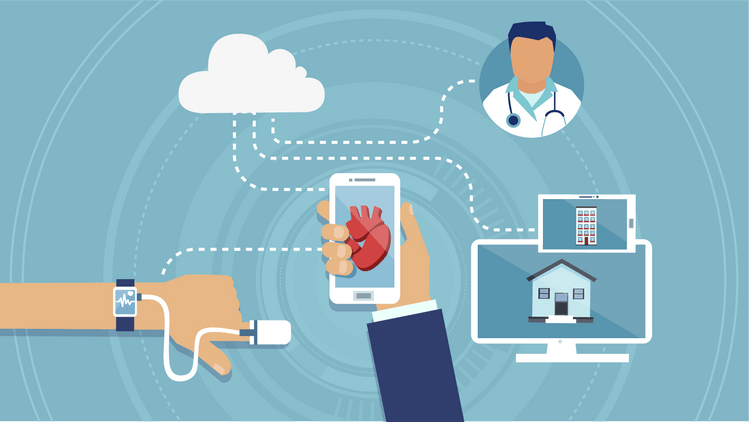Telehealth Devices and Virtual Care Go Hand-in-Hand

At a time when most people are forced to stay at home, the accessibility of electronic devices is enabling telehealth to be more effective than ever before.
As Fitbits, Apple iWatches, and Nike Fuelbands (now discontinued) have introduced the average exerciser to the ability to monitor steps, heart rate and even hydration in their daily efforts to stay fit and healthy, so too has telehealth pushed the boundaries with the support their devices can provide to doctors seeking to give excellent virtual care.
Closing the Physical Divide
These telehealth devices are being given to patients so that they can monitor their health at home. By expanding virtual care like this, patients with limited mobility, time or means of transportation now have greater flexibility and can access services in ways and at times that are more convenient for them.
Electronic devices in general increase the ability of online doctors and nurses to monitor a patient’s health. Patients can use a laptop, tablet or even smartphone to speak with their personal doctor, who will send them a link so they can access the visit quickly and easily. Nurses can also review logs of a patient’s results and then respond electronically.
Benefitting Those with Chronic Conditions
Where telehealth really comes into its own is the management of chronic conditions, such as blood glucose levels, high blood pressure, sleep patterns and even gait and posture control.
For example, if a patient has diabetes, they can:
- Upload any food logs, medications, dosages and blood glucose levels with a smart phone or tablet, which will then be reviewed by a nurse;
- Use an app to figure out how much insulin they would need based on what they had eaten and how much they had exercised that day;
- Download an app to their phone that helps them count the carbohydrates they’re consuming;
- Use their online patient portal to schedule appointments, check results, request a prescription refill or email their doctor;
- Order testing supplies and medication online;
- Undergo retina screening at their doctor’s clinic rather than having to schedule a visit with a specialist;
- Get reminders via email, text or phone call when they need a foot exam or other such preventative care.
Throughout this entire process, the patient has not had to leave their home once.
Beyond diabetes, there are apps and other devices, some of which are wearable, that can monitor blood pressure, lung function, heart rate, and tremors, to name but a few. There are even devices for homes which can monitor the elderly or those with dementia for falls or changes in activity.
Better Educated and More Invested Patients
As the distance between physicians and patients is reduced by access to effective virtual care, so too is the gap between education and healthcare for a patient.
Better informed and more involved, patients are aware of the impact of their actions on a more acute level as they use apps to:
- Educate themselves
- Monitor their own health with telehealth devices
- Read their personal doctor’s notes via their patient portals
- Contact their doctor with any questions via secure text messaging
On the flip side, their doctors, who are able to monitor their health remotely, can now step in and arrange a virtual visit should they have concerns about any results.
As better technology has led to better telehealth devices, virtual care has never been so effective.

